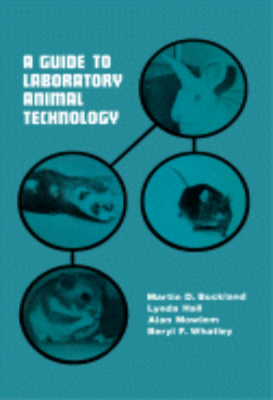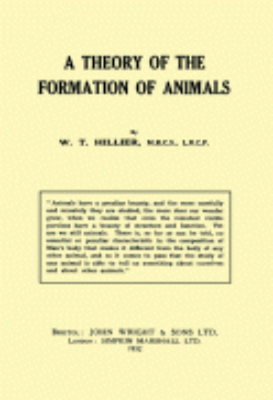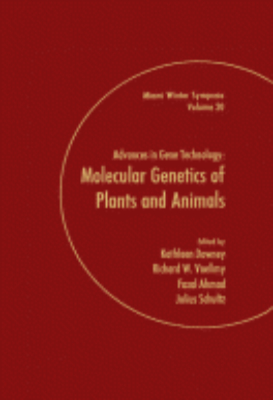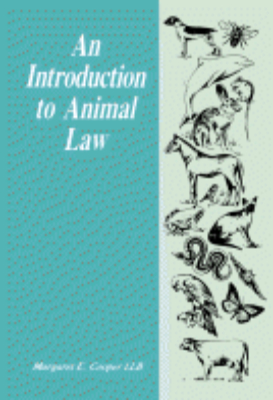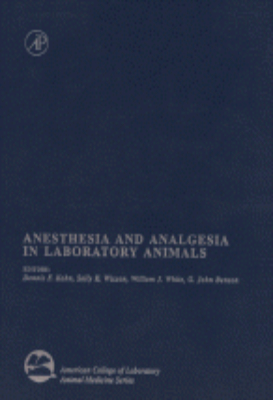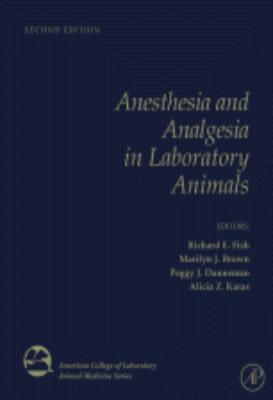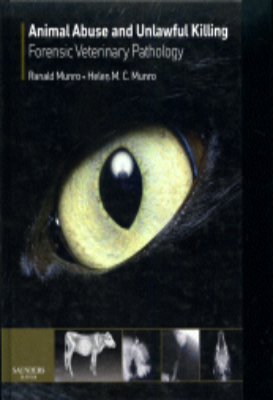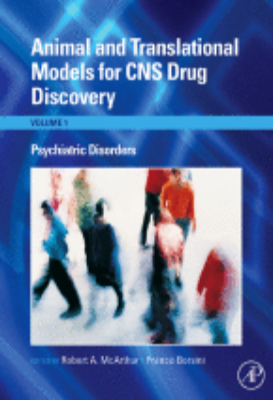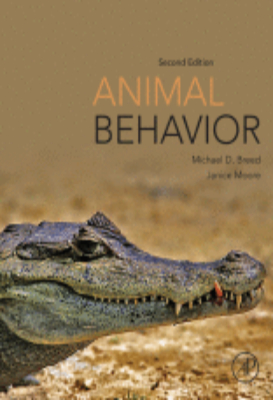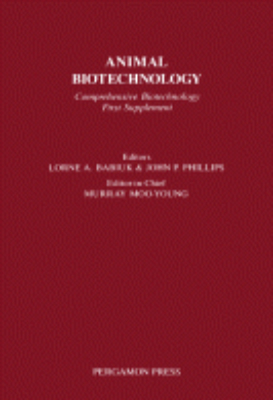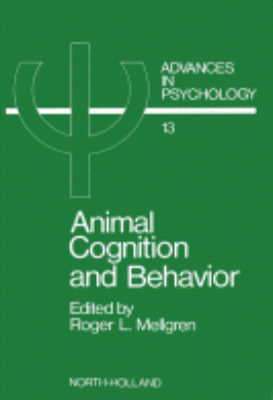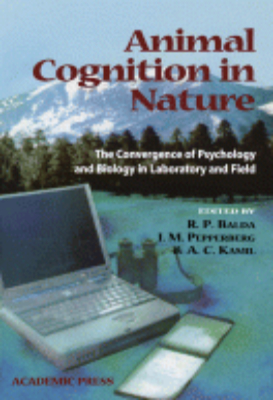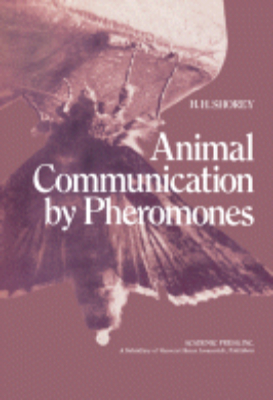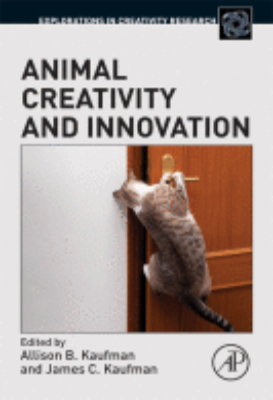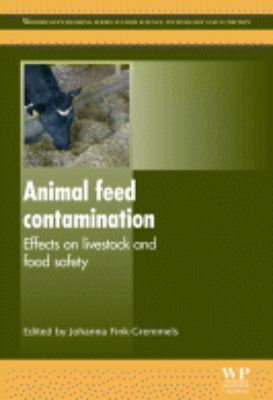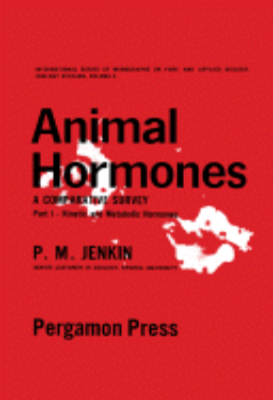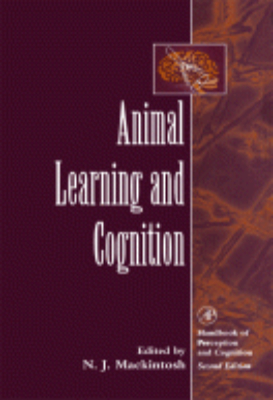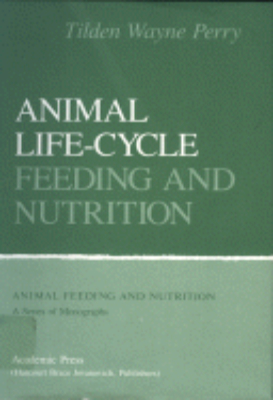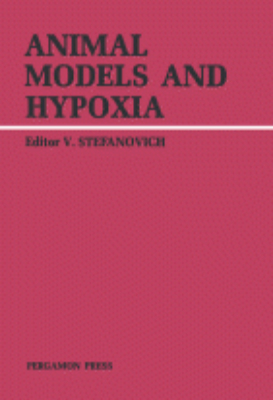E-Resources
A Guide to Laboratory Animal Technology
A Guide to Laboratory Animal Technology is a compilation of experiences of animal technicians with regard to laboratory animals in both research and breeding establishments. This book discusses common laboratory species individually with reference to anatomy, reproduction, maintenance, methods of handling, and identification. Studies on the common diseases found on these species are also provided. All aspects of laboratory animal husbandry are considered including equipment, SPF techniques, transport, and law. This selection also includes a guide to examination technique and basic mathematics section that can help students with little experience in either field. This text aims to provide an introduction and guide for the newcomers and students of the profession, as well as a useful comprehensive reference work for all those concerned with animals.
A Materia Medica for Chinese Medicine
"Phytotherapy or herbal medicine is the most important therapy within Chinese medicine and is being used increasingly in the West. A Materia Medica for Chinese Medicine: plants, minerals and animal products describes 400 of the most important plants, minerals and animal substances used as treatments by Chinese medical practitioners. The items included have been selected according to their degree of clinical relevance. Each remedy is clearly described and illustrated on two facing pages, making this an easily accessible reference for both students and practitioners of Chinese herbal medicine. The clearly laid out text presents the following details for each herb or substance included:. a detailed description of the characteristic features. indictions for safe use. medicinal and toxic effects. possible combinations with other substances. full-colour illustrations, generally two for each substance, showing the detailed characterisitcs of the item described A Materia Medica for Chinese Medicine has been written by two medically trained doctors who have worked as TCM therapists specializing in the use of Chinese herbs for more than 30 years. Based on their many years of teaching and practice, the book has been carefully compiled and designed to provide a concise and accurate practice-based reference for both students and practitioners."
A Theory of the Formation of Animals
A Theory of the Formation of Animals describes the details of formation of man, the structure, development, and physiology. This book is composed of seven chapters and begins with an introduction to a theory of animal formation, namely, the theory of dual constitution. This theory hypothesize that if new types of animal arise through the fusion of two animals of dissimilar kind, then one ought to find among the members of the animal kingdom some forms which might be called Type Animals. Two of these type animals are considered, the archi-annelid Polygordius and the herring (Clupea harengus). The final chapters describe the theoretical aspects of their skeleton and bones. This book is of value to zoologists, theorists, and researchers in the allied fields.
Advances in Animal and Comparative Physiology
Advances in Physiological Sciences, Volume 20: Advances in Animal and Comparative Physiology covers the proceedings of the symposia of the 28th International Congress of Physiology. The book discusses several studies that tackle issues about the advances in animal and comparative study. The text is comprised of 61 chapters in which Chapter 4 and the succeeding chapters are grouped into eight parts based on the topic of the studies. The opening chapter explains sensory modalities beyond human perception, while Chapter 2 discusses trends in the physiology of domesticated animals. Chapter 3 reviews muscles in living animals, which is followed by topics grouped into parts. The first part deals with fetal homeostasis, while the second part discusses control of corpora lutea function of ruminant and non-ruminant domesticated animals. The third part deals with the comparative physiology of lactation in farm animals, while the fourth part tackles digestion in non-ruminant herbivorous animals. Parts 5 and 6 cover topic on diving, which includes metabolism, physiology, and control. The seventh part discusses phylogenesis of hormones and hormone receptors, and the last part covers neuromuscular transmission in invertebrates. Researchers whose line of work concerns the physiological properties of animals will find this book as a great source of related literatures.
Advances in Gene Technology: Molecular Genetics of Plants and Animals
Advances in Gene Technology: Molecular Genetics of Plants and Animals contains the proceedings of the Miami Winter Symposium held in January 1983 in Miami, Florida. The papers explore advances in the molecular genetics of plants and animals and cover a wide range of topics such as genetic manipulation of plants; plant cell cultures, regeneration, and somatic cell fusion; and nitrogen fixation. Practical applications of gene technology with plants are also discussed. Comprised of 84 chapters, this volume begins with an overview of how plants manufacture from carbon dioxide and water all of their substances, paying particular attention to the path of carbon in photosynthesis. The organization of the plant genome is then considered, along with techniques for cell culture, regeneration, and somatic cell fusion; vector systems; and nitrogen fixation. Some chapters focus on gene transfer by protoplast fusion; somatic cell genetic systems in corn; regulation of transcription of the nitrogen fixation operons; and leghemoglobin and nodulin genes of soybean. The final section is devoted to practical applications of gene technology to plants and to technology frontiers in animal biology, in particular embryonic development and vaccines and diagnostic methods for animal diseases. This book should be of value to molecular geneticists.
An Introduction to Animal Law
Legislation relating to animals has ancient origins and in many civilizations certain species have held particular significance, be it religious, cultural, nutritional, or sporting. As a general rule, the law was primarily concerned with animals as property, rather than in need of protection, until the 19th century. Since the 1970s animal law has proved to be a growth area in the production and enforcement of both national and international legislation. This has been particularly so in the areas of conservation and welfare and there has been extensive legal and philosophical consideration of the status of animals.This book is not intended to be a standard text, but rather a handbook in the true sense, a guide for the lay person--namely, to help the non-lawyer to understand the basic concepts of animal law and to provide the lawyer (who is the lay person in the world of animal science) with an introduction to relevant concepts and literature which are not normally found in the conventional legal texts.
Anesthesia and Analgesia in Laboratory Animals: 1997
"Anesthesia and Analgesia in Laboratory Animals focuses entirely on the special anesthetic, analgesic, and postoperative care requirements associated with experimental surgery. Sponsored by the American College of Laboratory Animal Medicine, this informative work provides the reader with agents, methods, and techniques for anesthesia and analgesia that ensure humane and successful procedural outcomes. Key Features. Focuses on a wide variety of animal species used in research. Provides a comprehensive overview of the pharmacology of anesthetics and analgesics. Includes monitoring of analgesia and anesthesia. Organizes topics by species for agents and methods of providing anesthesia, analgesia, and post-op care to animals. No other American text is devoted entirely to this topic"
Anesthesia and Analgesia in Laboratory Animals: Second Edition 2008
"Anesthesia and Analgesia in Laboratory Animals focuses on the special anesthetic, analgesic, and postoperative care requirements associated with experimental surgery. Fully revised and updated this new edition provides the reader with agents, methods, and techniques for anesthesia and analgesia that ensure humane and successful procedural outcomes. Key Features. Provides researchers with the most comprehensive and up-to-date review of the use of anesthesia and analgesia in laboratory animals. Thoroughly updated with new material on ferrets, birds, reptiles, amphibians, fish, and invertebrates. Includes hot topic areas such as pain research, ethical issues, legal issues, and imaging studies"
Animal Abuse and Unlawful Killing
This book guides veterinarians and lawyers through the diverse and complex fields of alleged cruelty to, and unlawful killing of, companion animals, farm livestock and wildlife. It draws together current knowledge on how to approach, investigate and report forensic cases. Key Features Covers all aspects of the forensic post-mortem including cause and time of death Features the fundamentals of abuse and neglect Allows rapid access to descriptions of different types of injuries and gives essential guidance on their interpretation Backed by practical standard operative procedures from world experts to ensure proper and professional case management High quality, specially selected photographs, a clear writing style and concise presentation informs and encourages the reader towards soundly-based conclusions
Animal and Translational Models for CNS Drug Discovery
Animal and Translational Models for CNS Drug Discovery combines the experience of academic, clinical and pharmaceutical neuroscientists in a unique collaborative approach to provide a greater understanding of the relevance of animal models of neuropsychiatric disorders and their role as translational tools for the discovery of CNS drugs being developed for the treatment of these disorders. The focus of this three-volume series of essays is to present a consensual picture of the translational value of animal models from leading experts actively involved in the use of animal models for understanding fundamental neurobiology of CNS disorders and the application of this knowledge to CNS drug discovery, and clinical investigators involved in clinical trials, drug development and eventual registration of novel pharmaceuticals. Each volume of the Animal and Translational Models for CNS Drug Discovery series is dedicated to the development and use of animal models in key therapeutic areas in psychiatric, neurologic and reward deficit disorders. Each volume has introductory chapters expressing the view of the role and relevance of animal models for CNS drug discovery and development from the perspective of (a) academic basic neuroscientific research, (b) applied pharmaceutical drug discovery and development, and (c) issues of clinical trial design and regulatory agencies limitations. Each volume examines the rationale, use, robustness and limitations of animal models in relevant therapeutic areas and discusses the use of animal models for target identification and validation. The clinical relevance of animal models is discussed in terms of major limitations in cross-species comparisons, clinical trial design of drug candidates, and how clinical trial endpoints could be improved. The aim of this series of volumes on Animal and Translational Models for CNS Drug Discovery is to identify and provide common endpoints between species that can serve to inform both the clinic and the bench with the information needed to accelerate clinically-effective CNS drug discovery. Key Features - Provides clinical, academic, government and industry perspectives fostering integrated communication between principle participants at all stages of the drug discovery process - Critical evaluation of animal and translational models improving transition from drug discovery and clinical development - Emphasizes what results mean to the overall drug discovery process - Explores issues in clinical trial design and conductance in each therapeutic area - Each volume is available for purchase individually.
Animal Behavior (Second Edition)
"Animal Behavior, Second Edition, covers the broad sweep of animal behavior from its neurological underpinnings to the importance of behavior in conservation. The authors, Michael Breed and Janice Moore, bring almost 60 years of combined experience as university professors to this textbook, much of that teaching animal behavior. An entire chapter is devoted to the vibrant new field of behavior and conservation, including topics such as social behavior and the relationship between parasites, pathogens, and behavior. Thoughtful coverage has also been given to foraging behavior, mating and parenting behavior, anti-predator behavior, and learning. This text addresses the physiological foundations of behavior in a way that is both accessible and inviting, with each chapter beginning with learning objectives and ending with thought-provoking questions. Additionally, special terms and definitions are highlighted throughout. Animal Behavior provides a rich resource for students (and professors) from a wide range of life science disciplines. Key Features. Provides a rich resource for students and professors from a wide range of life science disciplines. Updated and revised chapters, with at least 50% new case studies and the addition of contemporary in-text examples. Expanded and updated coverage of animal welfare topics. Includes behavior and homeostatic mechanisms, behavior and conservation, and behavioral aspects of disease. Available lab manual with fully developed and tested laboratory exercises. Companion website includes newly developed slide sets/templates (PowerPoints) coordinated with the book"
Animal Biotechnology: 1989
The advent of biotechnology has the potential to develop a variety of novel or better quality products for the treatment of a large number of diseases in livestock. In addition, as we understand more about the reproductive physiology of animals, the potential exists to dramatically increase the productivity of animals through better therapeutics and diagnostics for the control of many infectious diseases. Productivity can also be increased through animal breeding strategies including gene transfer, micromanipulation of embryos and gamete sex selection. As well as being a valuable reference to current knowledge in these areas, this first supplement toComprehensive Biotechnologyalso looks at societal concerns over the use of antibiotics and chemical residues in meat and milk products, which are forcing biotechnologists to investigate more natural means of controlling infection by stimulating the animal's own immune system to combat infection. The identification of a variety of cytokines which are involved in regulating immune responses provides opportunities to use the animal's natural defence mechanisms to combat many infections or increase the animal's resistance to such infections. These approaches should provide tools for eventual elimination of specific diseases from counties, regions or whole continents.
Animal Biotechnology: 2014
"Animal Biotechnology introduces applications of animal biotechnology and implications for human health and welfare. It begins with an introduction to animal cell cultures and genome sequencing analysis and provides readers with a review of available cell and molecular tools. Topics here include the use of transgenic animal models, tissue engineering, nanobiotechnology, and proteomics. The book then delivers in-depth examples of applications in human health and prospects for the future, including cytogenetics and molecular genetics, xenografts, and treatment of HIV and cancers. All this is complemented by a discussion of the ethical and safety considerations in the field.Animal biotechnology is a broad field encompassing the polarities of fundamental and applied research, including molecular modeling, gene manipulation, development of diagnostics and vaccines, and manipulation of tissue. Given the tools that are currently available and the translational potential for these studies, animal biotechnology has become one of the most essential subjects for those studying life sciences. Key Features. Highlights the latest biomedical applications of genetically modified and cloned animals with a focus on cancer and infectious diseases. Provides firsthand accounts of the use of biotechnology tools, including molecular markers, stem cells, and tissue engineering"
Animal Cell Bioreactors
Animal Cell Bioreactors provides an introduction to the underlying principles and strategies in the in vitro cell culture biotechnology. It addresses engineering aspects such as mass transfer, instrumentation, and control ensuring successful design and operation of animal cell bioreactors. The goal is to provide a comprehensive analysis and review in the advancement of the bioreactor systems for large-scale animal cell cultures. The book is organized into four parts. Part I traces the historical development of animal cell biotechnology. It presents examples of work in progress that seeks to make animal cell biotechnology processes as productive on a cost per unit of product basis as that achieved by other microbial systems. Part II includes chapters dealing with the implications of cell biology in animal cell biotechnology; protein-bound oligosaccharides and their structures; the development of serum-free media and its use in the production of biologically active substances; and the metabolism of mammalian cells. Part III focuses on animal cell cultivation, covering topics such as the fixed bed immobilized culture; three-dimensional microcarriers; and hydrodynamic phenomena in microcarrier cultures. Part IV discusses the design, operation, and control of animal cell bioreactors.
Animal Cell Biotechnology
There has been a dramatic increase in the perception of the value of animal cell biotechnology to the research and manufacturing communities in recent years. This volume seeks to keep the reader up-to-date with this progress. This sixth and final volume in the series concentrates on the biology of animal cells in culture, giving special attention to the relationship between biology and the ability to use such cells productively. As the search continues for greater productivity, there is a need to understand the switches within cells that control expression. Additional abilities to manipulate those switches in a controllable manner are also required. In the last five years, considerable progress has been made in the elucidation of the mechanisms for cell signaling and control of gene expression. The 13 chapters of this volume are devoted to these subjects and to techniques in areas of particular concern in manufacturing circles. The achievements in the field to date are described in this book, which, together with its five companion volumes in the series, will provide a building block for the future development of animal cell biotechnology.
Animal Cell Technology; 1994
Animal Cell Technology: Products of Today, Prospects for Tomorrow is a collection of papers that discusses the advancement and future of biotechnology. The book presents a total of 164 materials that are organized into 22 sections. The coverage of the text includes the various methodologies involved in animal cell technology, such as post translational modifications; kinetics and modeling; and measurement and assay. The book also covers product safety and consistency testing; products from animal cells in culture; and apoptosis and cell biology. The text will be of great use to biologists, biotechnicians, and biological engineers. Readers who have an interest in the advancement of biotechnology will also benefit from the book.
Animal Cell Technology: 1992
Animal Cell Technology: Developments, Processes and Products is a compilation of scientific papers presented at the 11th European Society for Animal Cell Technology (ESACT) Meeting, held in Brighton, United Kingdom. The book is a collection of various works of scientists, engineers, and other specialists from Europe and other parts of the world who are working with animal cells. The books aim is to communicate experiences and research findings on the development of cell systems. The research papers are grouped into 25 sections encompassing 145 chapters. Subjects covered range from cells and physiology engineering dealing with cell characterization, cell culture establishment, cloning, and cell engineering. Topics on culture media, ammonium detoxification, the effects of physical parameters on cell cultures, assays and monitoring systems, and bioreactor techniques are also covered. Discussions are likewise made on the products from animal cells in culture, virus removal, and DNA determination and characterization in relation to safety issues. The book will be useful for cell biologists, molecular biologists, biochemists, biochemical engineers, and students engaged in the study of animal cell cultures.
Animal Cognition in Nature
In this book, the editors bring together results from studies on all kinds of animals to show how thinking on many behaviors as truly cognitive processes can help us to understand the biology involved. Taking ideas and observations from the while range of research into animal behavior leads to unexpected and stimulating ideas. A space is created where the work of field ecologists, evolutionary ecologists and experimental psychologists can interact and contribute to a greater understanding of complex animal behavior, and to the development of a new and coherent field of study.
Animal Communication by Pheromones
Animal Communication by Pheromones describes how the behavior of animals is controlled and influenced by pheromone communication. This book describes the mechanism through which the social animals interact with each other and by which they are organized according to their relative statuses and functions. The text then describes the pheromonal communication system; the mechanisms of movement and orientation to pheromone sources; and recognition, aggregation, and dispersion pheromone behaviors. The sex pheromone behavior; the environmental and physiological control of sex pheromone behavior; and the aspects of pheromones as stimulators or inhibitors of aggression are considered. The book further tackles sex pheromones; reproductive isolation; and the evolution of pheromonal communication. Entomologists and animal scientists will find the book useful.
Animal Creativity and Innovation
"Animal Creativity and Innovation explores theories and research on animal innovation and creativity, comparing and contrasting it with theory and research on human creativity and innovation. In doing so, it encompasses findings from psychology, biology, neuroscience, engineering, business, ecology, and education. The book includes examples of animal innovation in parrots, dogs, marine mammals, insects, and primates, exploring parallels from creative play in children. The book defines creativity, differentiating it from play, and looks at evolutionary models and neurological constructs. The book further explores applied aspects of animal innovation and creativity including tool use and group dynamics, as well as barriers to creativity. The final chapters look into how creative behavior may be taught or trained. Each chapter is followed by a commentary for integration of thoughts and ideas between animal and human research, behavioral and cognitive research, and theory and observation in real life. Key Features. Compares theory and research on animal and human creativity. Defines and differentiates creativity from play. Reviews applied creativity in tool use and social dynamics. Includes examples of animal creativity in multiple species"
Animal Feed Contamination
"The production of animal feed increasingly relies on the global acquisition of feed material, increasing the risk of chemical and microbiological contaminants being transferred into food-producing animals. Animal feed contamination provides a comprehensive overview of recent research into animal feed contaminants and their negative effects on both animal and human health. Part one focuses on the contamination of feeds and fodder by microorganisms and animal by-products. Analysis of contamination by persistent organic pollutants and toxic metals follows in part two, before the problem of natural toxins is considered in part three. Veterinary medicinal products as contaminants are explored in part four, along with a discussion of the use of antimicrobials in animal feed. Part five goes on to highlight the risk from emerging technologies. Finally, part six explores feed safety and quality management by considering the safe supply and management of animal feed, the process of sampling for contaminant analysis, and the GMP+ feed safety assurance scheme. With its distinguished editor and international team of expert contributors, Animal feed contamination is an indispensable reference work for all those responsible for food safety control in the food and feed industries, as well as a key source for researchers in this area. Key Features. Provides a comprehensive review of research into animal feed contaminants and their negative effects on both animal and human health. Examines the contamination of feeds and fodder by microorganisms and animal by-products. Analyses contamination by persistant organic pollutants, toxic metals and natural toxins"
Animal Feeding Stuffs Legislation of the UK
Animal Feeding Stuffs Legislation of the UK: A Concise Guide offers a guide to legislation governing the production, sale, and distribution of animal feeding stuffs in the UK. Individual statutory instruments are discussed and categorized according to their relevance to raw materials, straight feeding stuffs, compound feeds, medicated feeds, and additives. Sampling, the rights of inspectors under different acts and regulations, codes of practice, and labeling requirements are also considered. This guide is comprised of nine chapters and begins with an overview of UK laws governing the manufacture and supply of animal feeding stuffs, including Agriculture Act 1970 Part IV, Medicines Act 1968 and Regulations made under it, and Animal Health and Welfare Act 1984. The next chapter presents a definition of terms, including those applied to animals with respect to the UK feed regulations. The reader is then introduced to statutory statements for raw material or straight feeding stuff; compound feeding stuffs; and additives and premixtures. This book also considers the registration system for manufacturers and qualifying on-farm mixers, along with licensing requirements for products to be used in feeds. The final chapter is devoted to statutory requirements for sampling and analysis of animal feeding stuffs. This monograph will be a helpful and authoritative resource for feed manufacturers, raw materials suppliers, technical advisors, enforcement agencies, and students of feed and livestock production.
Animal Hormones
Animal Hormones: A Comparative Survey, Part IKinetic and Metabolic Hormones provides a comprehensive coverage of the properties of kinetic and metabolic hormones of both vertebrates and invertebrates; the title particularly covers the sources, actions, and secretion of the said hormones. The text first details the general concerns with the hormones, such as the history, chemical activators, mechanical activation, types, and identification. The next chapter covers the sources of kinetic and metabolic hormones. Chapters 3 and 4 tackle kinetic hormones, while Chapter 5 discusses metabolic hormones. The book will be of great interest to students, researchers, and practitioners of zoology and biochemistry.
Animal Learning and Cognition
How do animals learn By what means can animals be conditioned This volume of the acclaimed Handbook of Perception and Cognition, Second Edition, reviews such basic models as Pavlovian conditioning as well as more modern models of animal memory and social cognition. Sure to represent a benchmark of a vast literature from diverse disciplines, this reference work is a useful addition to any library devoted to animal learning, conditioning behavior, and interaction.
Animal Life-cycle Feeding and Nutrition
Animal Life-Cycle Feeding and Nutrition reviews developments in feeding and nutrition throughout an animal's life cycle and covers a wide range of topics, from utilization of nutrients such as carbohydrates and proteins to nutrient digestion by ruminants, swine, poultry, and horses. Feedstuffs such as pasture and harvested forages, protein concentrates, and cereal and sorghum grains are also discussed. Comprised of 21 chapters, this book begins with a discussion on nutrients and their utilization, including carbohydrates, lipids, proteins, and minerals and vitamins. Nutrient digestion by ruminants, swine, poultry, and horses are then compared and feedstuffs for livestock are evaluated. The next section deals with feedstuffs such as pasture and harvested forages, protein concentrates, and cereal and sorghum grains, together with molasses, manure, and other miscellaneous feed ingredients. The remaining chapters explore the effect of processing on the nutrient value of feedstuffs; balancing of rations; and feeding of animals including swine, beef and dairy cattle, poultry, sheep, horses, dogs, and goats. This monograph is designed for students of animal sciences, for veterinary students as well as doctors of veterinary medicine, and for practitioners of livestock feeding.
Animal Memory
Animal Memory is based on the proceedings of a symposium held at Dalhousie University in the summer of 1969. Each of the seven chapters provide broad coverage of the topic with which it is concerned, and the experimental work reported is representative of the most significant developments in the field. The book includes two studies on associative memorythe memory of one event which is essential to its association (over a delay) with subsequent events. One study shows that shows that animals can remember events from one learning trial to the next and that their behavior will be determined largely by the sequences of trials with differing outcomes; the other presents research on the association of flavors with toxicosis in a conditioning paradigm. Separate chapters deal with retentive memorythe retention and forgetting of learned behavior over time; and the physiological basis of memory in terms of consolidation theory. These studies demonstrate that animals do forget and examine theories of forgetting. The final chapter provides a critical discussion based on all of the foregoing material in which the topics covered in the book are related to current work on human retention and forgetting.
Animal Migration Orientation and Navigation
Animal Migration, Orientation, and Navigation presents the various aspects of animal migration, including the evolution of migration, climatic and meteorological influences, and bioenergetics. This book discusses the physiological control, sensory systems, orientation and navigation, and biological clocks and phenology aspects of animal migration. Organized into five chapters, this book begins with an overview of the migration strategies of animals in the context of a space continuum. This text then explains the influence of short- and long-term climatic cycles on the spectrum of migratory patterns in nature. Other chapters consider the energetic requirements of different migration strategies and the energy stores of the migrants. This book discusses as well the physiological basis of animal migration, with emphasis on endocrinal findings on the timing and energetic aspects of different migration strategies. The final chapter deals with the mechanisms used in direction finding by migrating animals. This book is a valuable resource for biologists and ecologists.
Animal Models and Hypoxia
Animal Models and Hypoxia consists of proceedings from an international symposium. The text discusses the developments made on the study of brain metabolism. An article about the regional utilization of glucose in the brain of mammals is presented. There is also a section that reviews the energy metabolism in the nervous system of insects. The topics covered includes the role of sympathetic innervation in the regulation of cerebral blood flow during hypercapnia, the comparative aspects of energy metabolism in non-mammalian brains under normoxic and hypoxic conditions, and an anoxic rat model. A method developed to gauge the rates of glucose utilization in the central nervous system is evaluated. This method is effective in mapping the functional neural pathways base on stimulated metabolic responses. Factors that contribute to the development of gerontopsychiatric disorders in men are reviewed. The book will provide useful information to doctors, veterinarians, neurologists, students, and researchers in the field of neurology.

